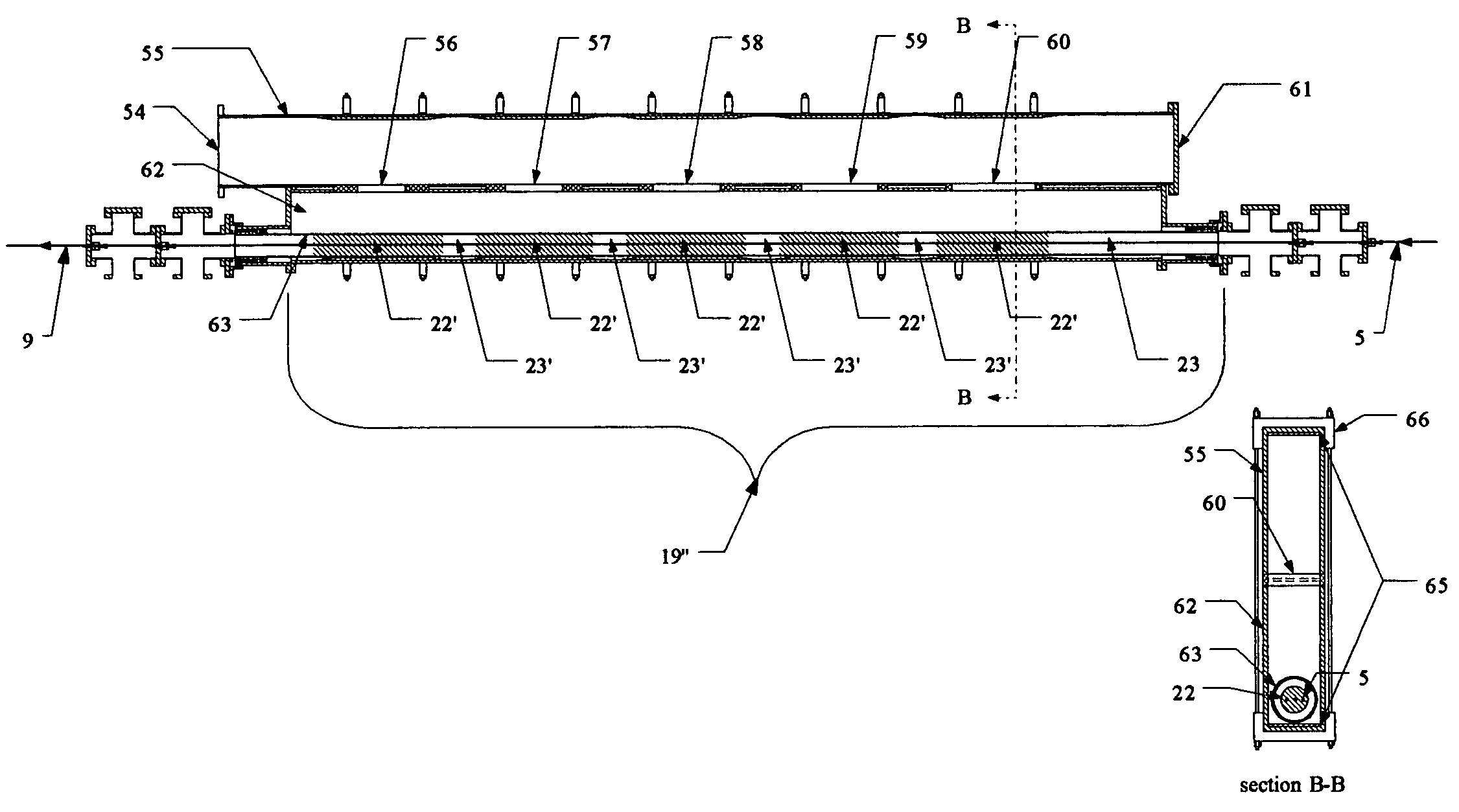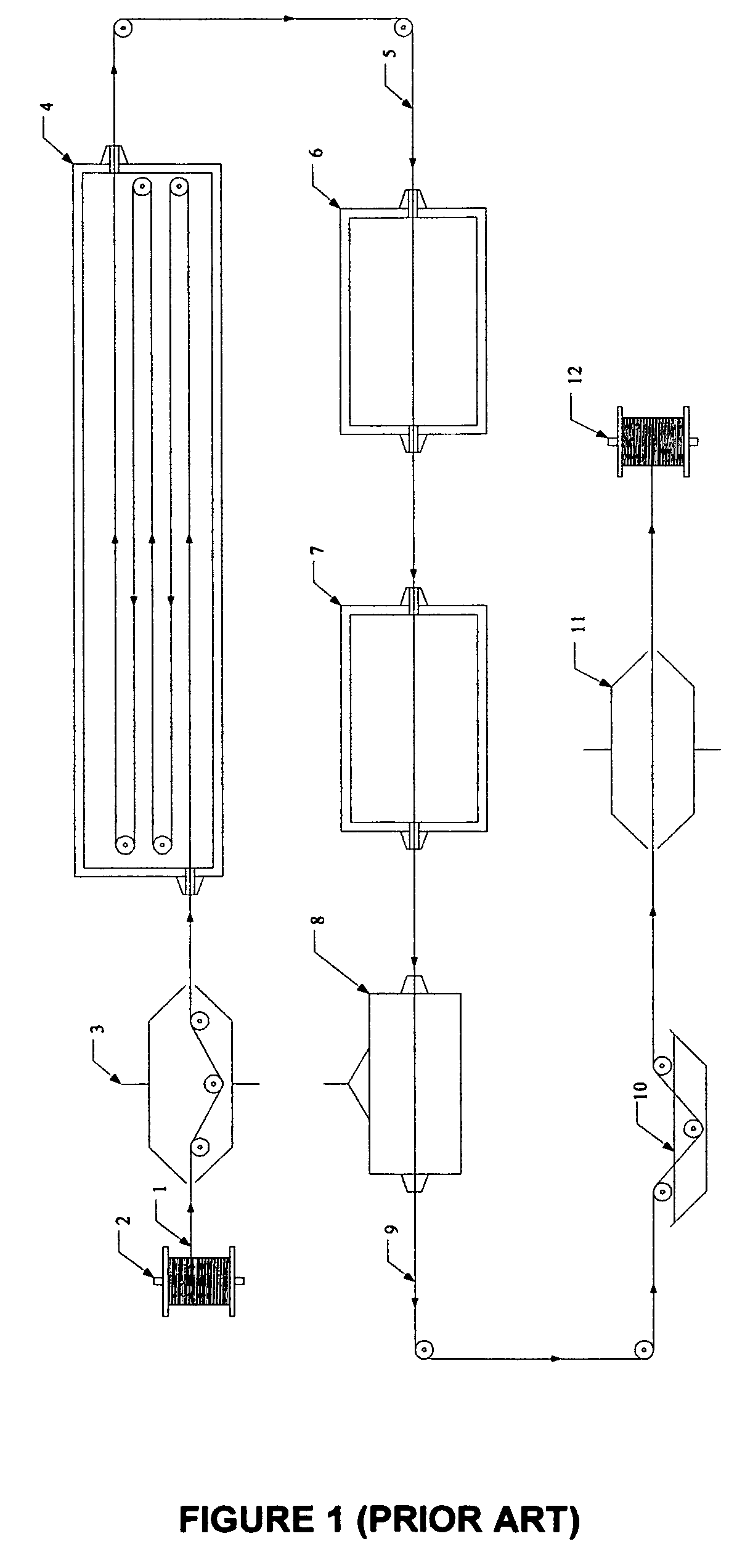System to continuously produce carbon fiber via microwave assisted plasma processing
- Summary
- Abstract
- Description
- Claims
- Application Information
AI Technical Summary
Benefits of technology
Problems solved by technology
Method used
Image
Examples
example
[0068]X-Ray Photoelectron Spectroscopy (XPS) analysis of carbon fiber produced in the MAP system with a small air leakage demonstrated a concentration of surface oxygen equal or higher than the corresponding values present on a conventionally-produced carbon fiber with standard industrial ozone surface treatment. XPS analysis was performed with a large aperture 0.8 mm and a minimum of 25 sweeps for each data point. Table 3 shows that the MAP processed fibers with a small amount of oxygen has higher amounts of elementary oxygen on the surface of the fibers compared to conventional carbon fibers.
[0069]
TABLE 3Surface oxygen content on fibersMeasuredStandardFiber SamplesPositionsAverage (%)Deviation (%)MAP 1118.01.9MAP 257.51.8MAP 357.12.5MAP 459.22.1Untreated Conventional2-4Ozone-Treated4.7-5.8Conventional
[0070]This surprising effect of the basic MAP system creates added benefits because this system can process fibers from a state of fully-oxidized precursor all the way to surface-trea...
PUM
| Property | Measurement | Unit |
|---|---|---|
| Pressure | aaaaa | aaaaa |
| Fraction | aaaaa | aaaaa |
| Fraction | aaaaa | aaaaa |
Abstract
Description
Claims
Application Information
 Login to View More
Login to View More - R&D
- Intellectual Property
- Life Sciences
- Materials
- Tech Scout
- Unparalleled Data Quality
- Higher Quality Content
- 60% Fewer Hallucinations
Browse by: Latest US Patents, China's latest patents, Technical Efficacy Thesaurus, Application Domain, Technology Topic, Popular Technical Reports.
© 2025 PatSnap. All rights reserved.Legal|Privacy policy|Modern Slavery Act Transparency Statement|Sitemap|About US| Contact US: help@patsnap.com



